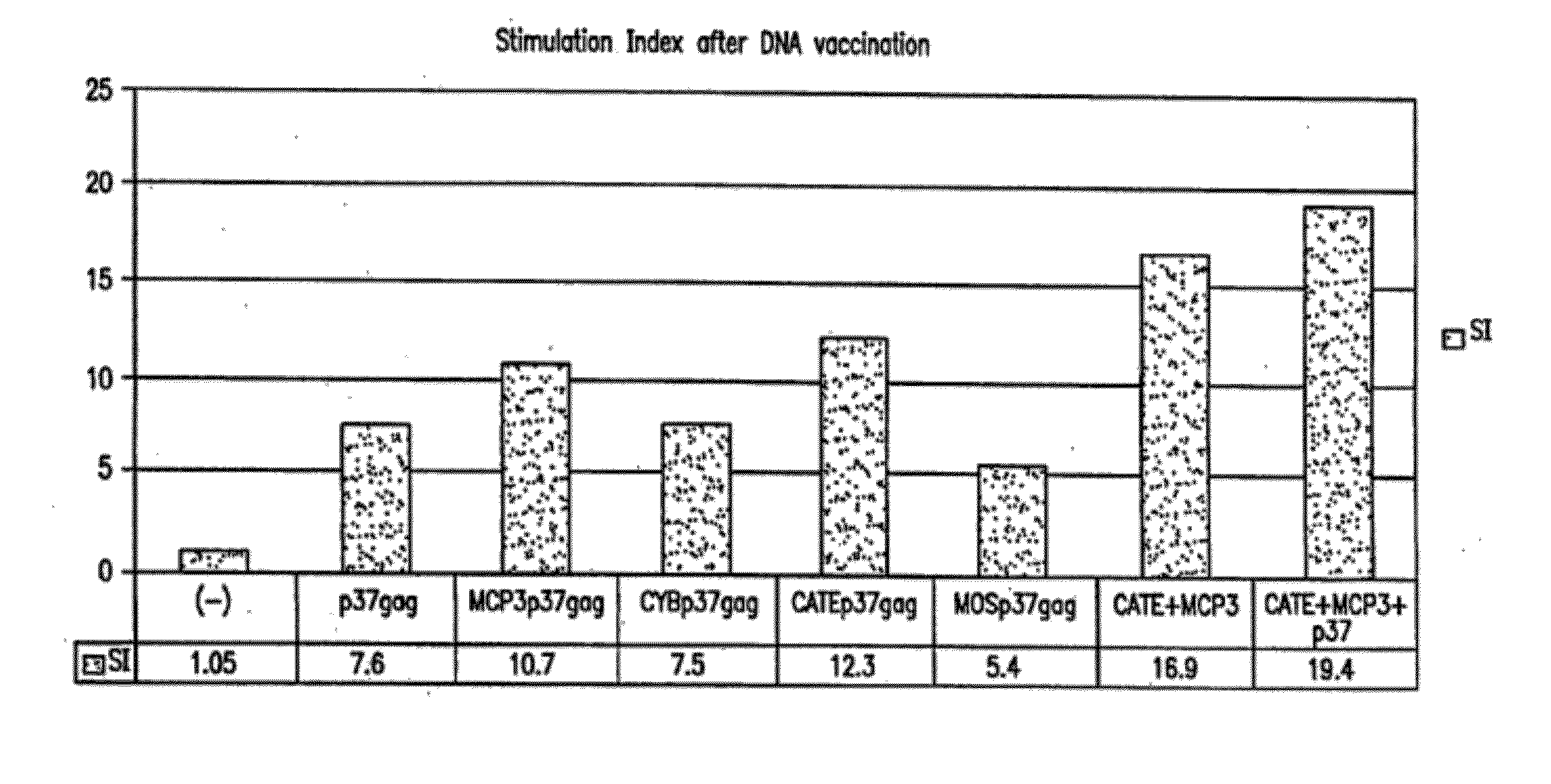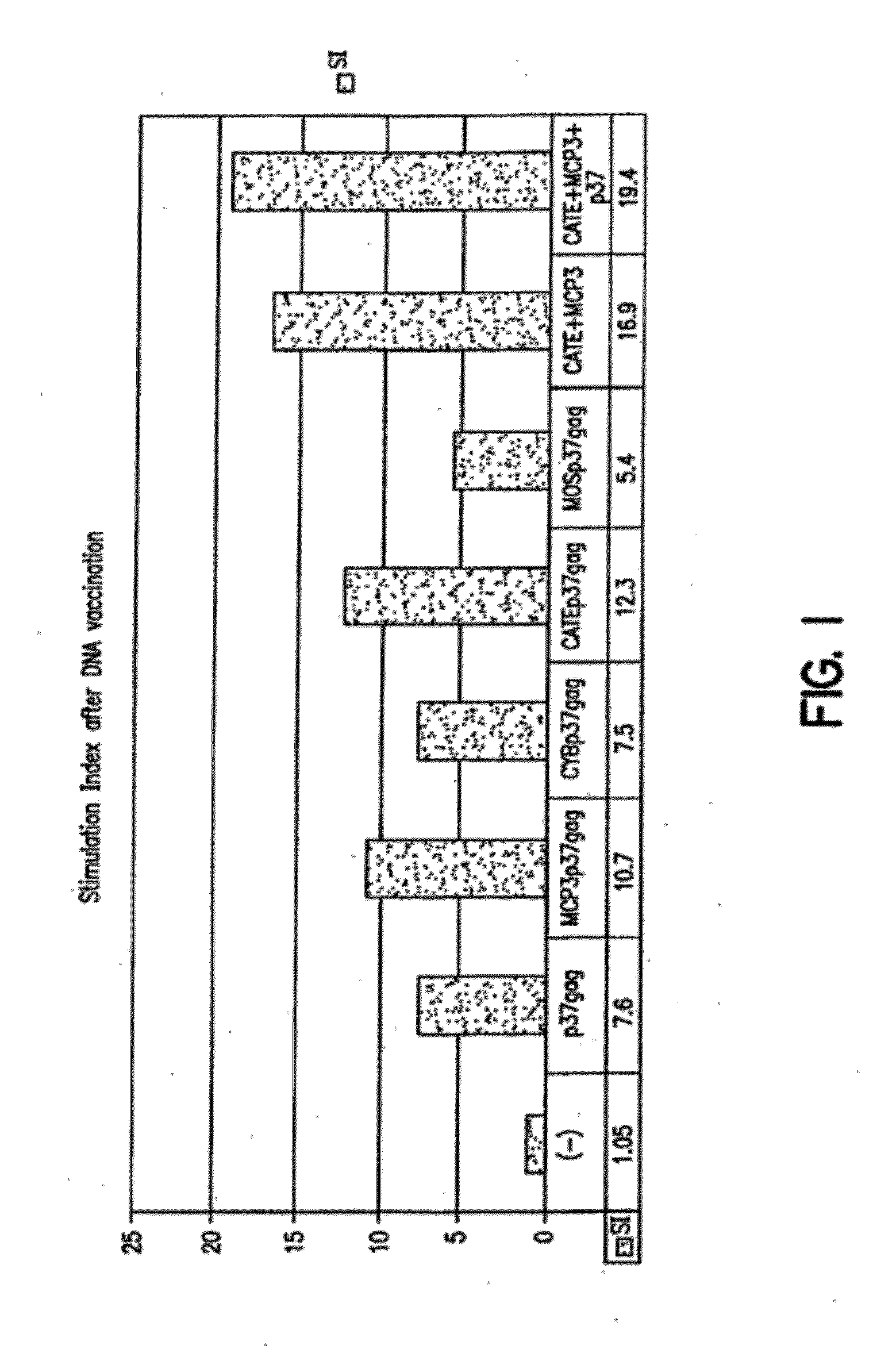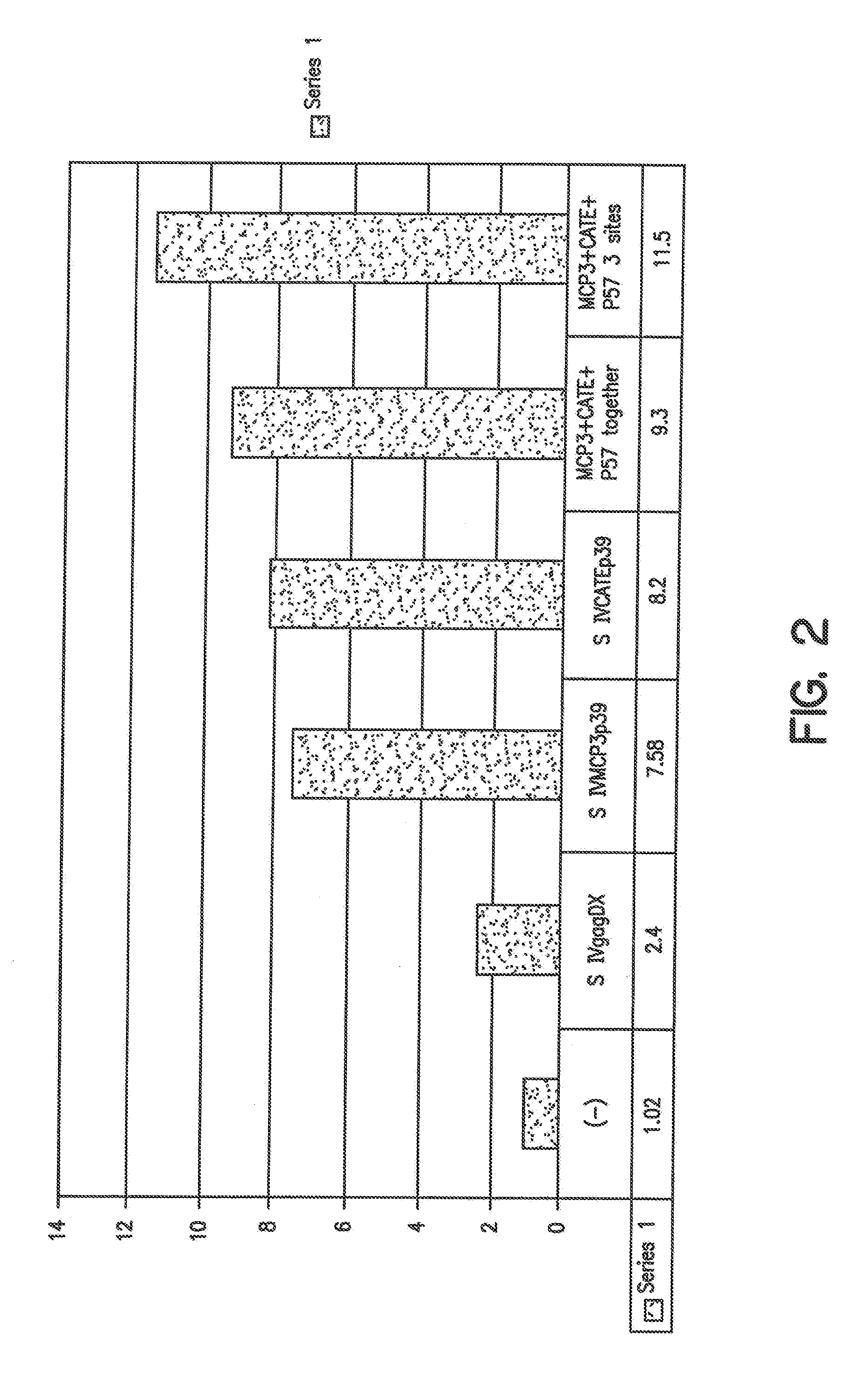Expression vectors able to elicit improved immune response and methods of using same
a technology of expression vectors and immune responses, applied in the field of nuclear acids, can solve the problems of inability to obtain dna vaccines that could induce potent cellular immune responses against hiv-1 gag, and the performance of primates is generally disappointing, and achieves the effect of enhancing the immune respons
- Summary
- Abstract
- Description
- Claims
- Application Information
AI Technical Summary
Benefits of technology
Problems solved by technology
Method used
Image
Examples
example 1
Vectors
[0083]DNA vectors expressing antigens of HIV-1 or SIV are used in the examples herein.
[0084]Three different types of plasmids encoding forms of HIV Gag exemplified herein are as follows:[0085]1) plasmids expressing full gag (p55) or parts of gag (p37) or gag and protease (p55gagpro). P55 produces gag particles that are partially released from the cell. P37 is partially released from the cell but does not form particles. P55gagpro also produces protease, therefore the gag is processed to form p17, p24, p6 and p7;[0086]2) plasmids expressing the chemokine MCP-3 fused to the N terminus of p55gag. Since MCP-3 is a secreted protein, the produced fusion protein is also secreted from the mammalian cells after the cleavage of the signal peptide; and[0087]3) plasmids expressing fusions of gag to sequences conferring efficient proteasomal degratation.
Similar DNA expression vectors were produced for HIV env protein (see, e.g., FIGS. 8-9), as well as for SIV gag and any proteins. The HIV...
example 2
Construction of Vectors
[0099]In order to design “Gag-destabilized” constructs, a literature search for characterized sequences able to target proteins to the ubiquitin-proteasome degradation pathway gave the following, not necessarily representative, list:
c-Mycaa2-120Cyclin Aaa13-91Cyclin Baa13-91 *we used 10-95 in vectors in examples hereinIkBaaa20-45b-Cateninaa19-44 *we used 18-47 in vectors in examples hereinc-Junaa1-67c-Mosaa1-35
[0100]We cloned a subset of those degradation sequences from Jurkat cDNA, namely the signals from cyclin B, β-catenin, and c-Mos, using PCR. Both cyclin and catenin primers gave fragments of the expected length, that were cut and cloned into the SalI site of the vectors pCMV37 (M1-10) kan, or pCMV55 (M1-10) kan, and (Barn version) into the BamHI site of pFREDlacZ. (The p37 and p55 plasmids have the same p37 and p55 sequences disclosed in the patents containing INS-gag sequences (see, e.g., U.S. Pat. No. 5,972,596 and U.S. Pat. No. 5,965,726, which are in...
example 3
Preliminary Characterization of the Degradation Signals in the Vectors
[0107]The following experiments were conducted for preliminary characterization of the degradation signals in the nucleic acid constructs described above.
[0108]β-Galactosidase activity was measured in transiently transfected HeLa and 293 cells after transfection with either pFREDlacZ or its cyclin B or β-catenin-modified versions (pS201 & 202). Apparent loss of the lacZ activity was interpreted as being indicative of ubiquitination signal-induced protein degradation.
[0109]With modified Gag the following experiments were done to confirm that degradation signals work in the gag context as well. First, p24-gag was measured by ELISA in cellular extracts and supernatants of cells transfected with the modified Gag constructs. Although we obtained evidence of destabilization, in several cases this experiment measuring the total level of p24 antigen was inconclusive. This was probably because, as shown previously, fragmen...
PUM
 Login to View More
Login to View More Abstract
Description
Claims
Application Information
 Login to View More
Login to View More - R&D
- Intellectual Property
- Life Sciences
- Materials
- Tech Scout
- Unparalleled Data Quality
- Higher Quality Content
- 60% Fewer Hallucinations
Browse by: Latest US Patents, China's latest patents, Technical Efficacy Thesaurus, Application Domain, Technology Topic, Popular Technical Reports.
© 2025 PatSnap. All rights reserved.Legal|Privacy policy|Modern Slavery Act Transparency Statement|Sitemap|About US| Contact US: help@patsnap.com



